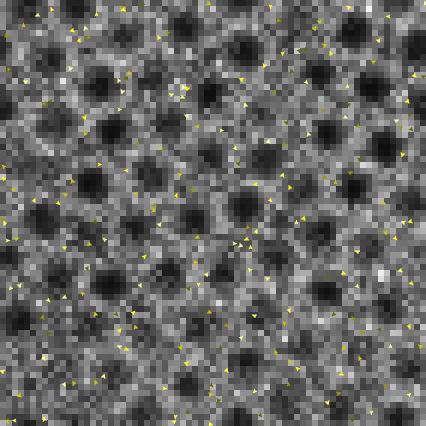

The MAKE_OBSTACLE button the flock remains quite cohesive whenĬonfronted with various shapes and sizes of obstacles. Obstacles can easily be created in the center of the screen by using Influences of the three closest neighbors. Maintain straight-line motion (excluding walls and random turns), whileĪ flexibility of 100 represents instantaneous adjustment to the A flexibility of zero would cause a bird to The NOISE slider determines the maximum random adjustment that a bird could make to its heading in a single time step.įLEXIBILITY slider controls how completely a bird adjusts its heading The relative sizes must be maintained for the REPEL_RANGE, DIR_RANGE, and POS_RANGE sliders control the outer limits The NUMBER slider sets the number of birds in the simulation. The step by step go button should be used when obstacles are opaque,īecause no attempt is made to synchronize the turtles' execution ofĬommands when they are looking for obstacles. The birds' line of sight and hide neighbors that are behind obstacles. Selecting obstacles_opaque (which isĭone by default in the reset_birds procedure) causes obstacles to block Obstacles_transparent, birds can still see neighbors that are on the Perceive obstacles in the middle of the screen. OBSTACLES_TRANSPARENT and OBSTACLES_OPAQUE buttons toggle the way birds The MAKE_OBSTACLES and REMOVE_OBSTACLES buttons allow you to make obstacles that the birds must avoid, and to remove them. The GO button executes the flocking rules described above one button executes a step at a time and the other runs continuously. The RESET_TURTLES button creates the specified number of birds and places them in black cells on the board. The RESET_BOARD button erases all obstacles that have been drawn and restores the edge boundary. Realistic, it adds variety to the simulation by forcing the birds toĬontinually adapt the flocking structure to outside influences. All birds also have a blind spot (the default is 30 degrees)ĭirectly behind them, in which they cannot sense the presence of otherįor the sake of simplicity, birds reflect off of obstaclesĪs light would reflect off of a mirror. This allows trailing birds toĬatch up with the flock and leading birds to slow down without turningĪround.

Position range it will decelerate slightly for each neighbor that isīehind it and in the position range. Weighted by the inverse of distance, such that close birds are moreĪccelerate slightly for each neighbor in front of it and in the That these would imply for each neighbor the influences of birds are A bird moves towards neighbors that are far away.īird adjusts its heading towards a vector sum of the "target" headings A bird aligns with neighbors that are a comfortableĭistance away (i.e., it attempts to match the neighbor's heading.)ģ) Position range. A bird moves away from neighbors that are too close.ĭirection range. Heading of its three nearest neighbors this adjustment is partitionedġ) Repel range. A bird adjusts its flight based on the position and/or Group of individuals such as fish in a school, or birds in a flock.Įach bird follows a simple rule, and the flock as a whole moves withoutĪny leader.

This project is an attempt to simulate the coordinated motion of a
Netlogo northwestern download#
You also need to download the NetLogo program, which you can do by right-clicking or control-clicking this link. To download this page, do not use "Save As," but right-click (or on Macs control-click) on this link.

General information on the models, including instructions for running them on your own computer, is available from the NetLogo Simulation Information Page. On other operating systems, you may obtain the latest Java plugin from Web browser under Safari/Preferences/General.)
Netlogo northwestern mac#
Mac users must have OS X 10.2.6 or higher and useĪ browser that supports Java 1.4. Questions, problems? Contact applet requires Java 1.4.1 or higher. This page was automatically generated by NetLogo 3.1.4. Flock NetLogo Simulation CS 420/594 - Biologically Inspired Computation


 0 kommentar(er)
0 kommentar(er)
